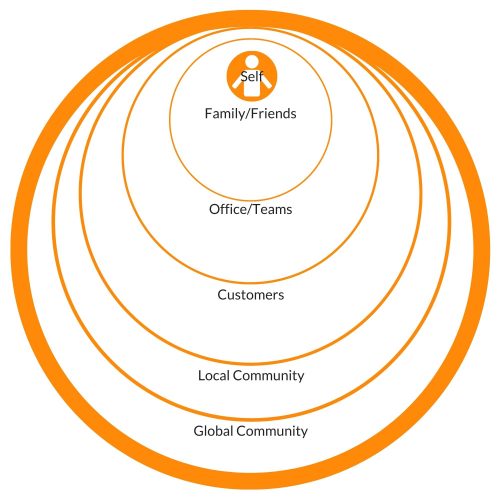By MACNY Consultant, Laura Thorne 
Did you know that when (properly) implemented, empowering the people in your life can reap rewards for both you and them? Just as empowering someone isn’t about granting power to them in a literal sense, it’s also not a one way transaction.
This week’s blog is a follow up to my blog last week, Engagement Falls Short, Empower to Emancipate for the Win, where I talked about the subtle differences between engagement, empowerment, and emancipation. As I touched upon, not only does your approach to empowerment matter, so does who you seek to empower.
To avoid promoting the power granting interpretation of empowerment, we’ll avoid using it as a verb and focus more on using empowerment as a tool at our disposal. For our purposes, the definition of empowerment is helping people make decisions and take action. This is fundamental to setting people up for success, including yourself.
For example, having an employee that has to come to you (the Supervisor) to get permission to make day-to-day decisions is unproductive for you and the employee. If upper management has created this codependent situation, often referred to as “this is how we’ve always done it”, it can be frustrating for both parties.
The following is a simple 2-step exercise that you can utilize to ensure the bottle necks are removed, people feel ownership of their decisions, and encouraged to think for themselves.
Step 1. See the Richard Brandon inspired Circles diagram below. The first step to unlocking the benefits of empowerment is understanding who you could practice empowerment with. Start with yourself (personal empowerment techniques are different from practicing empowerment with others). Then, work on the outer circles. You may not have influence in each of the circles.

This exercise was inspired by Richard Banson and a practice he describes in his autobiography called Finding My Virginity (a great read by the way). He further describes in a blog article from 2017 how he uses visualizing circles of influence to determine areas to contribute support. For example, Virgin Companies have chosen to draw a circle around the globe and address climate change and other global issues.
Step 2. Once you have a clearer picture of who is in your circles of influence, you can start to consider ways you could practice empowering them. For example, if you’ve written down some key customers in the customers’ circle, reflect on the ways you could help them make decisions and take action. If your customers are purchasers of a product, you might provide them an FAQ (which saves them from having to come to you and saves you from answering questions over and over). You also might survey them to ask how you could better serve them or you might simplify a purchasing process (which could increase your profit margins). There doesn’t always have to be a payoff for you. Customer satisfaction might be the greatest pay off.
This is somewhat of a self-awareness exercise as well. You might find that you do a pretty good job empowering your teams, but do a poor job with your teenagers at home. I encourage you to run through the exercise with an open mind and see what discoveries you make.
If you are interested in learning more, we’ll be going much deeper into this exercise in the upcoming workshop, Build a Culture of Action: Engage > Empower > Emancipate, on Tuesday March 22 from 9am – 11am.
Laura Thorne specializes in strategy and execution through workshops, coaching, and other services. Click here to learn more about Laura’s consulting partnership with MACNY.
Want to to suggest an article topic or make a comment? Contact Laura at [email protected].